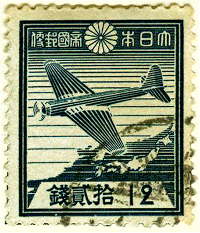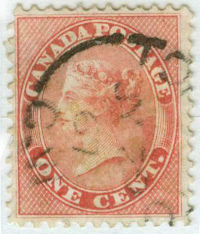
Discussion - Member to Member Sales - Research Center

Discussion - Member to Member Sales - Research Center

As a result of the Japanese surrender, the British Commonwealth Occupation Force (B.C.O.F.) was formed with troops from Australia, Great Britain, New Zealand and India. Headquarters were in Kure, Japan, and postal services were provided by the Australian Army Postal Service.
These overprints exist as an effort to suppress the black market that had sprung up in the sale of goods from Military Canteens and stores.
The troops could sell their goods and remit the profits made in the form of Australian stamps which their relatives back home could exchange back to cash at any Australian post office (The Post Office charged 5% for this service).
To prevent stamps being 'legal tender' only overprints were subsequently issued and they were only valid for postage from Japan, via the Australian Army Postal Service (who issued these stamps to the troops in restricted quantities).
There were seven values issued - the ½d Kangaroo, 1d Queen Elizabeth, 3d George VI, 6d Kookaburra, 1/- Lyrebird, 2/- Kangaroo (redrawn die), and the 5/- Queen Elizabeth in Coronation Robes on thick and thin papers.
The first three values ½d, 1d and 3d were issued on October 12, 1946 but were withdrawn the following day because approval to overprint Australian stamps had never been sought nor granted.
This printing was a trial overprint of the thin serif type. All were from an experimental proof sheet printing and it is believed only one sheet was printed before deciding not to proceed with these particular types.
The series were re-issued with the seven values on May 8, 1947.
The stamps were overprinted by the Hiroshima Printing Ca, Japan using a 160 on forme of electrotype. (2 panes x 80)
The ½d Kangaroo had a red overprint, the 1d Queen also had a red overprint and a dull grey black overprint. The 3d George VI brown had three types of overprint, gold, red and black, the gold being the scarcest of the overprints.
The B.C.O.F. stamps were withdrawn on February 12, 1949 and unsold remainders were destroyed by burning on March 28, 1949.
The official figures of the stamps issued were:
½d - 189,670; 1d - 378,750; 3d - 891,643; 6d - 136,133; I/- - 131,055; 2/- - 62,651; 5/- - 32,508.
Only 6,000 of the thin paper were issued.
The stamps displayed are all mint unhinged with full original gum. All I need to obtain is the 3d KGVI colour trial proof with red overprint, a very difficult stamp to find.

Correction - There are five colour trial proofs showing, not 4.

4 Members
like this post.
Login to Like.
I note that some of these overprints are in different positions relative to the frame of the stamp. Do any of these different positions occur on the same basic stamp? I also note that the ink-density appears to differ in some cases. Again do any of these differences appear on the same stamp?
Are any such differences catalogued?
Malcolm

Login to Like
this post
Hi Malcolm
The position of the overprints and type of ink density are the same on all the commercial stamps.
Rob

Login to Like
this post
Member ACCC (Australian Commonwealth Collectors Club of NSW)
10 Nov 2017
02:55:55am
Recapping a brief history of these iconic stamps linked to an historical event that changed the world.
As a result of the Japanese surrender, the British Commonwealth Occupation Force (B.C.O.F.) was formed with troops from Australia, Great Britain, New Zealand and India. Headquarters were in Kure, Japan, and postal services were provided by the Australian Army Postal Service.
These overprints exist as an effort to suppress the black market that had sprung up in the sale of goods from Military Canteens and stores.
The troops could sell their goods and remit the profits made in the form of Australian stamps which their relatives back home could exchange back to cash at any Australian post office (The Post Office charged 5% for this service).
To prevent stamps being 'legal tender' only overprints were subsequently issued and they were only valid for postage from Japan, via the Australian Army Postal Service (who issued these stamps to the troops in restricted quantities).
There were seven values issued - the ½d Kangaroo, 1d Queen Elizabeth, 3d George VI, 6d Kookaburra, 1/- Lyrebird, 2/- Kangaroo (redrawn die), and the 5/- Queen Elizabeth in Coronation Robes on thick and thin papers.
The first three values ½d, 1d and 3d were issued on October 12, 1946 but were withdrawn the following day because approval to overprint Australian stamps had never been sought nor granted.
This printing was a trial overprint of the thin serif type. All were from an experimental proof sheet printing and it is believed only one sheet was printed before deciding not to proceed with these particular types.
The series were re-issued with the seven values on May 8, 1947.
The stamps were overprinted by the Hiroshima Printing Ca, Japan using a 160 on forme of electrotype. (2 panes x 80)
The ½d Kangaroo had a red overprint, the 1d Queen also had a red overprint and a dull grey black overprint. The 3d George VI brown had three types of overprint, gold, red and black, the gold being the scarcest of the overprints.
The B.C.O.F. stamps were withdrawn on February 12, 1949 and unsold remainders were destroyed by burning on March 28, 1949.
The official figures of the stamps issued were:
½d - 189,670; 1d - 378,750; 3d - 891,643; 6d - 136,133; I/- - 131,055; 2/- - 62,651; 5/- - 32,508.
Only 6,000 of the thin paper were issued.
The stamps displayed are all mint unhinged with full original gum. All I need to obtain is the 3d KGVI colour trial proof with red overprint, a very difficult stamp to find.

Correction - There are five colour trial proofs showing, not 4.

4 Members
like this post.
Login to Like.
06:25:39am
re: B.C.O.F. Rare Series
I note that some of these overprints are in different positions relative to the frame of the stamp. Do any of these different positions occur on the same basic stamp? I also note that the ink-density appears to differ in some cases. Again do any of these differences appear on the same stamp?
Are any such differences catalogued?
Malcolm

Login to Like
this post
Member ACCC (Australian Commonwealth Collectors Club of NSW)
18 Nov 2017
03:52:57pm
re: B.C.O.F. Rare Series
Hi Malcolm
The position of the overprints and type of ink density are the same on all the commercial stamps.
Rob

Login to Like
this post


